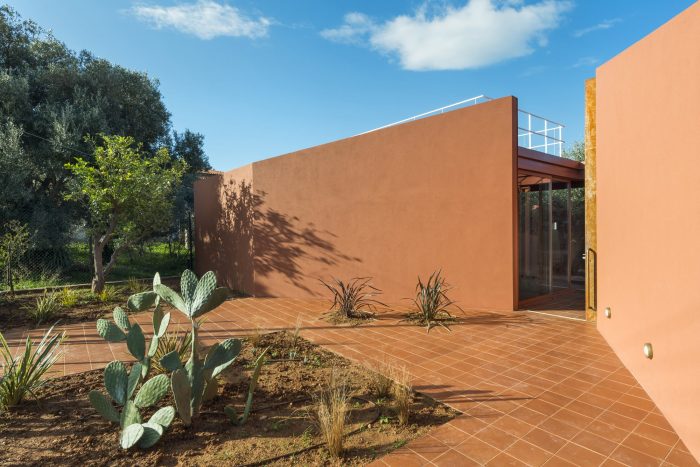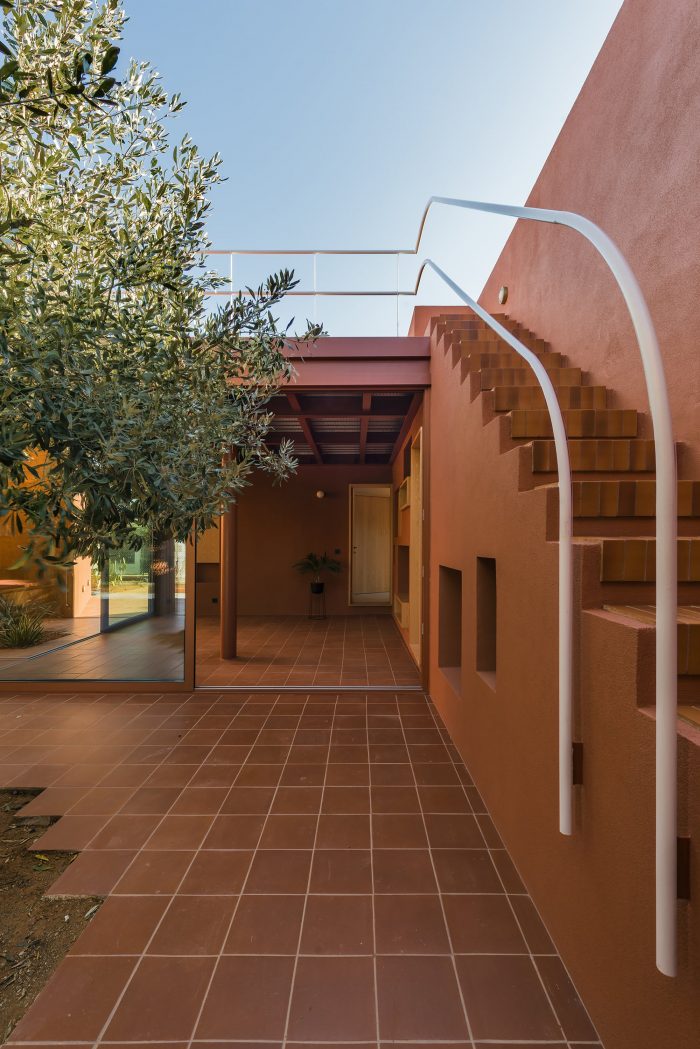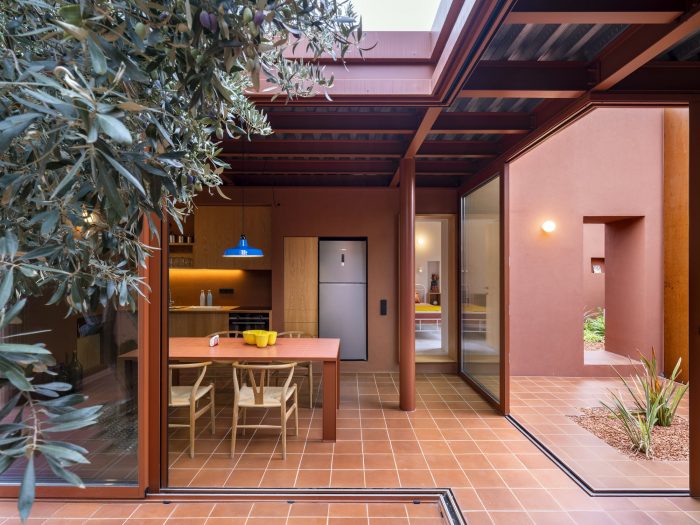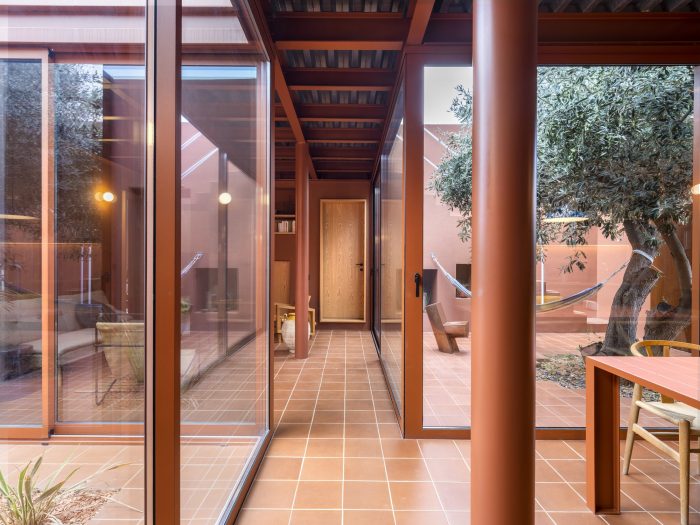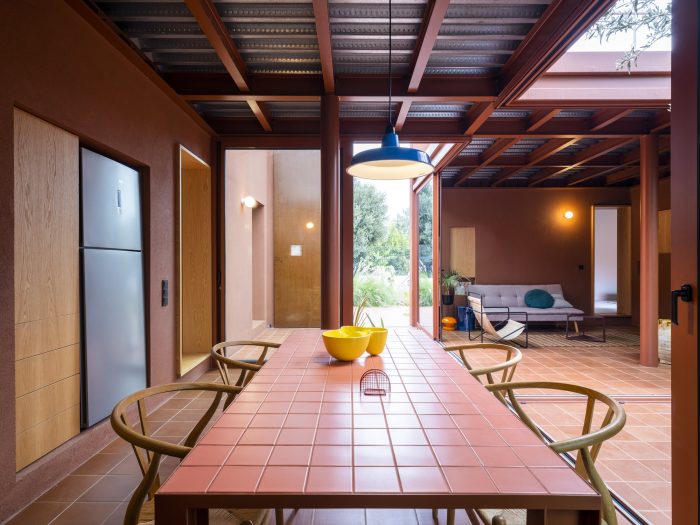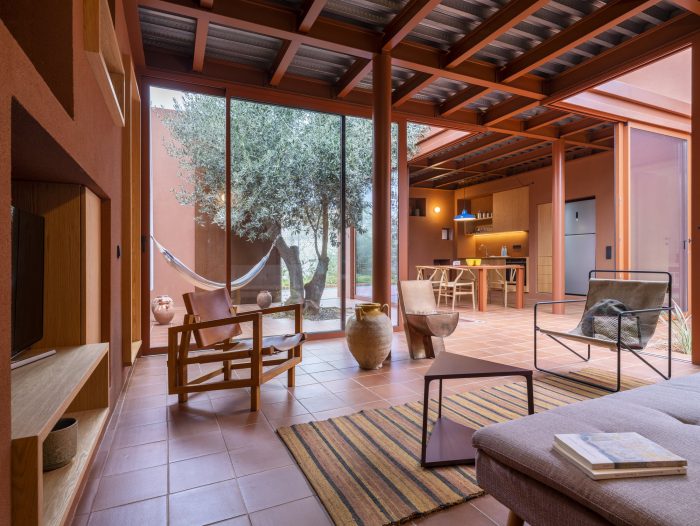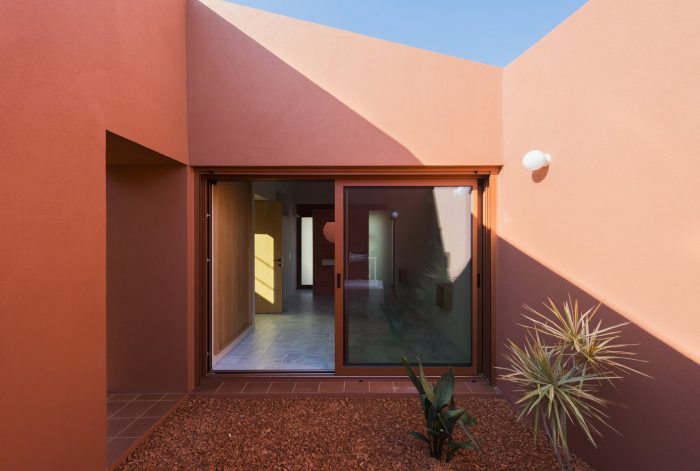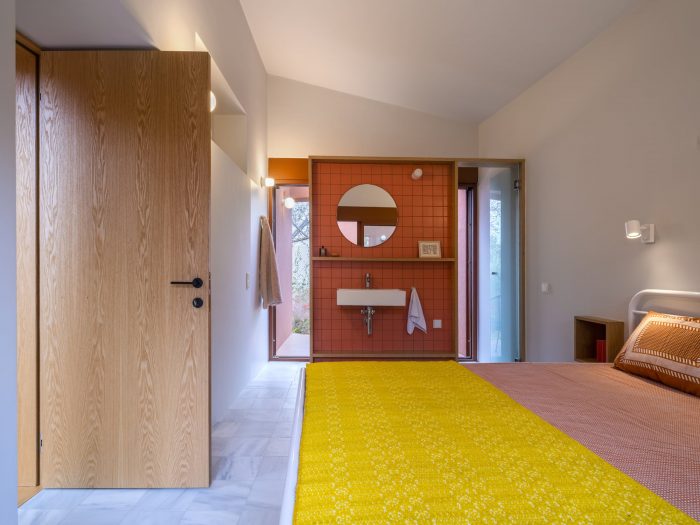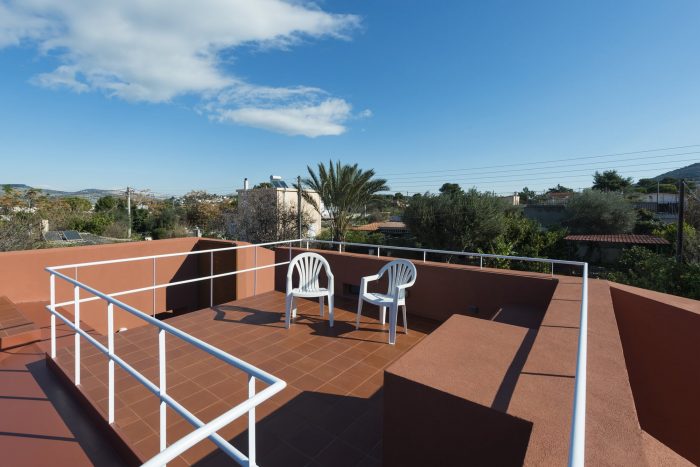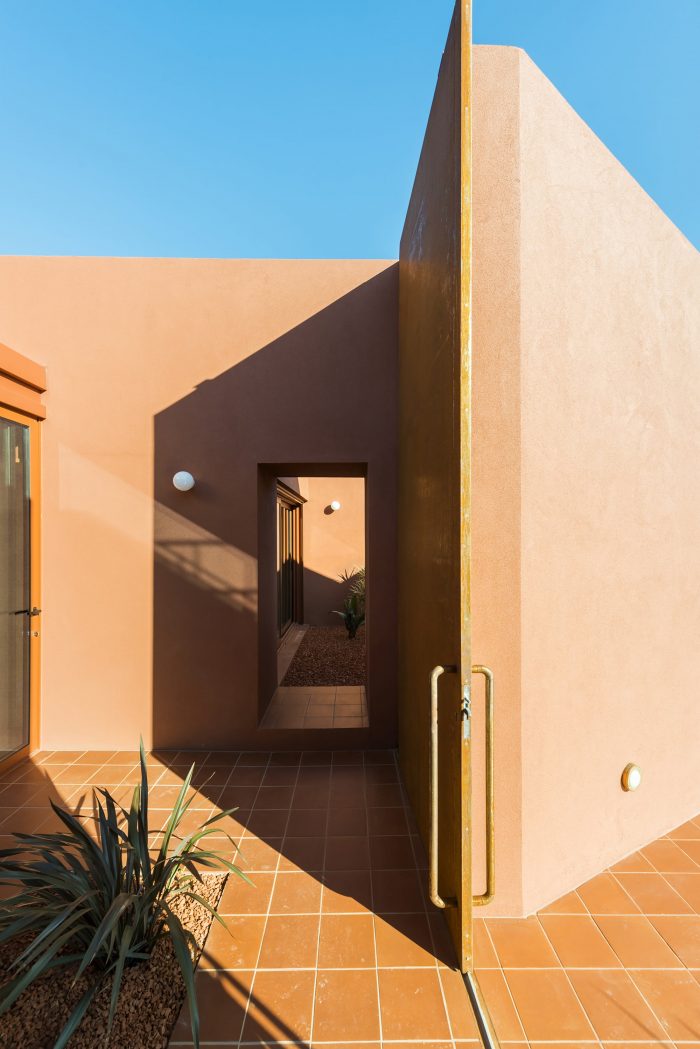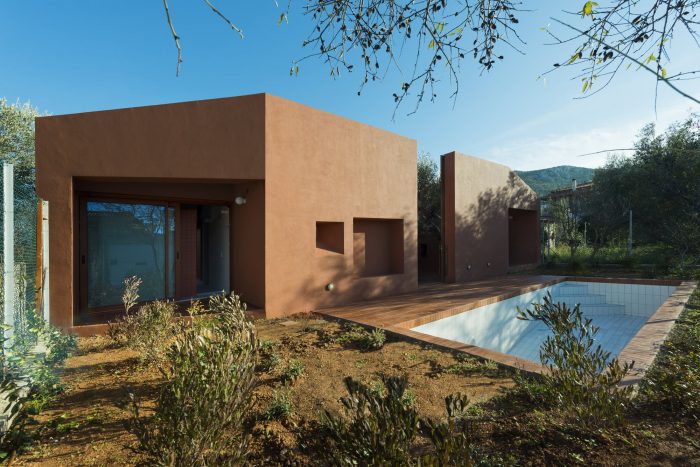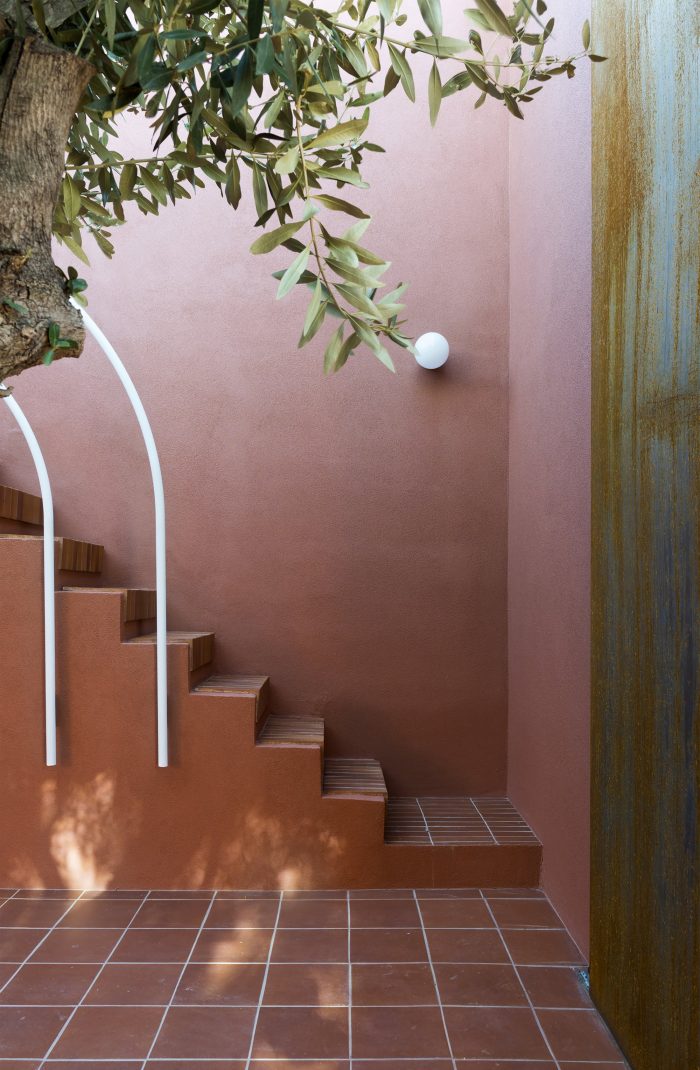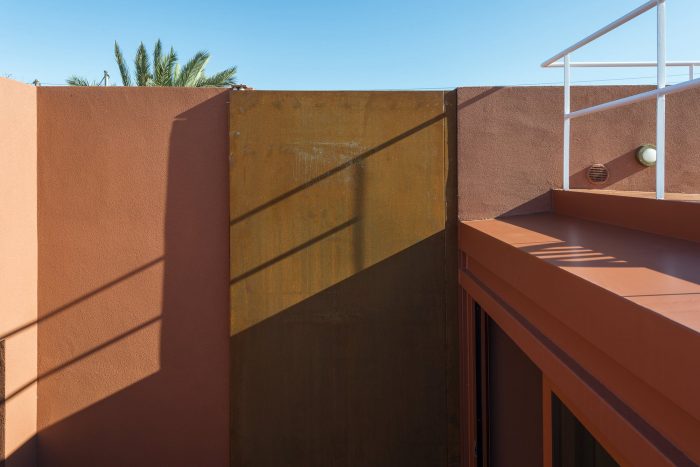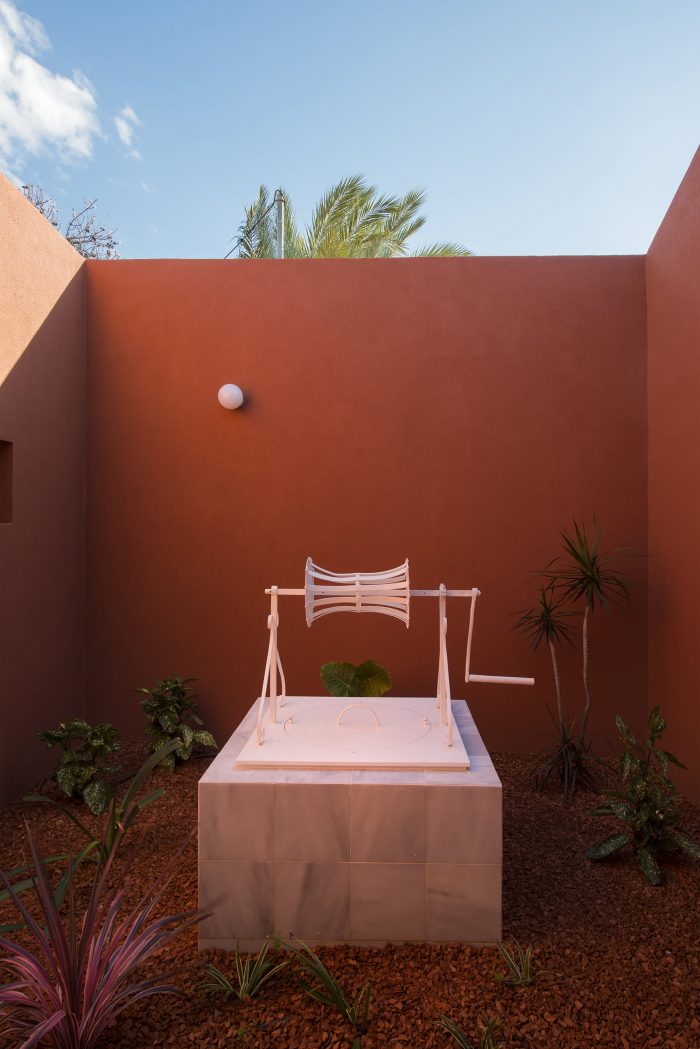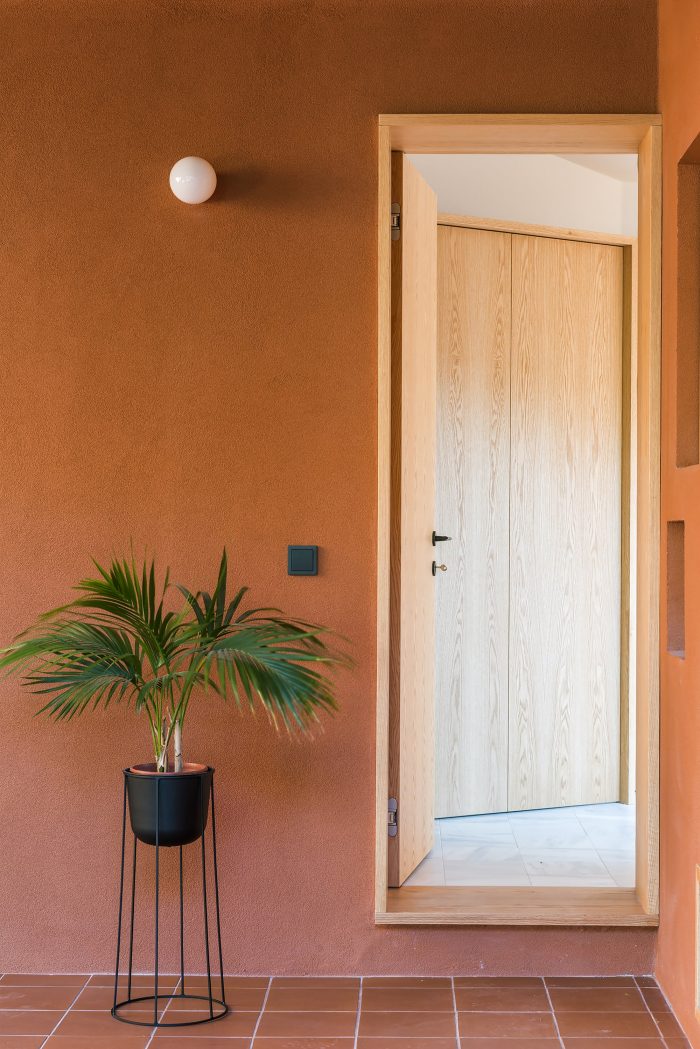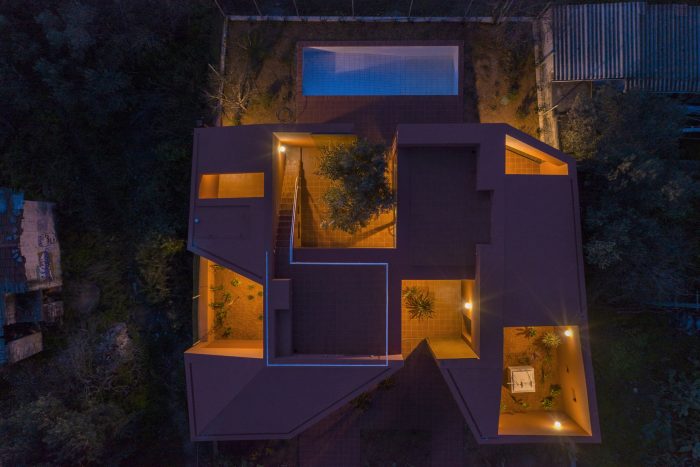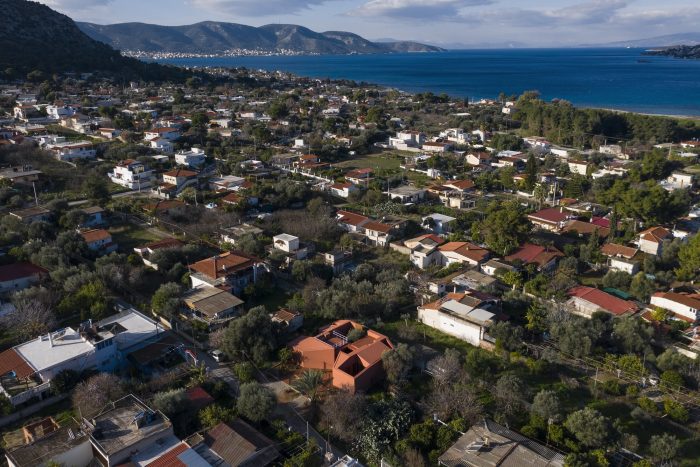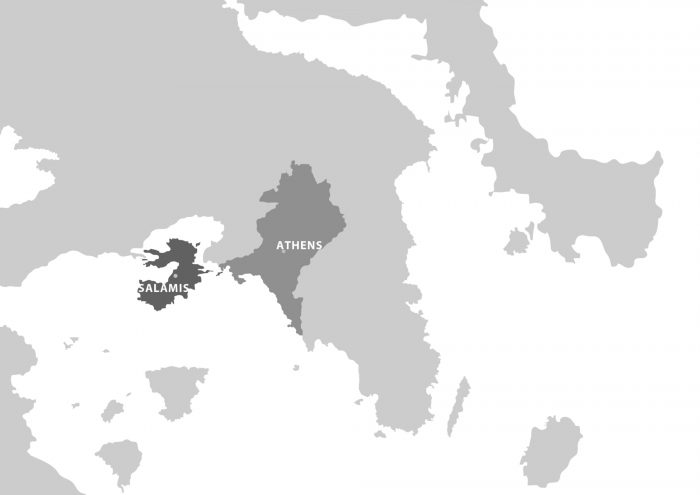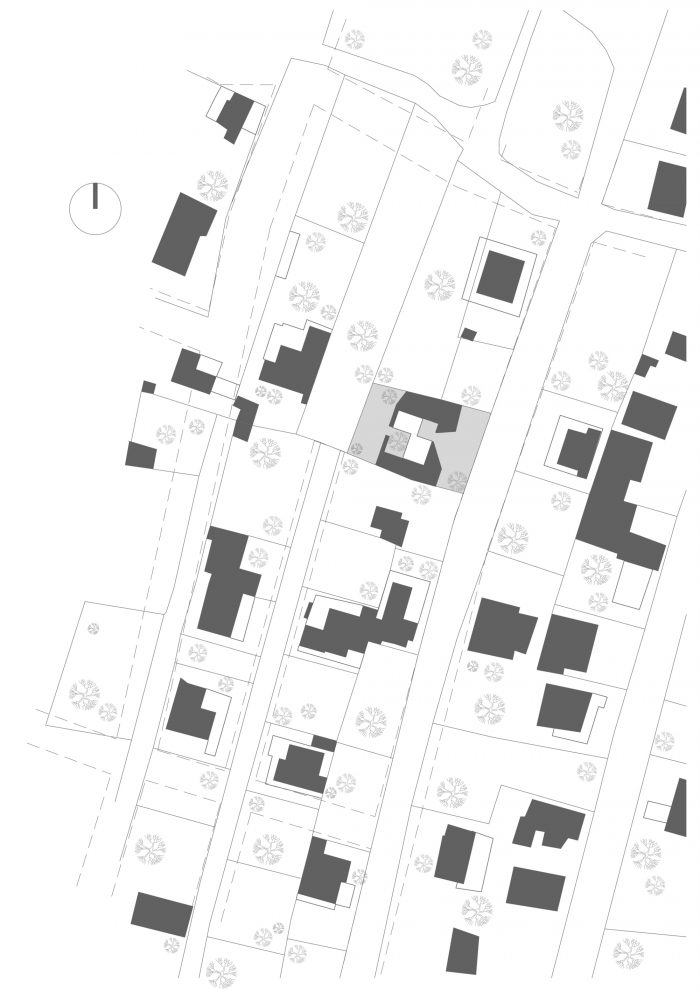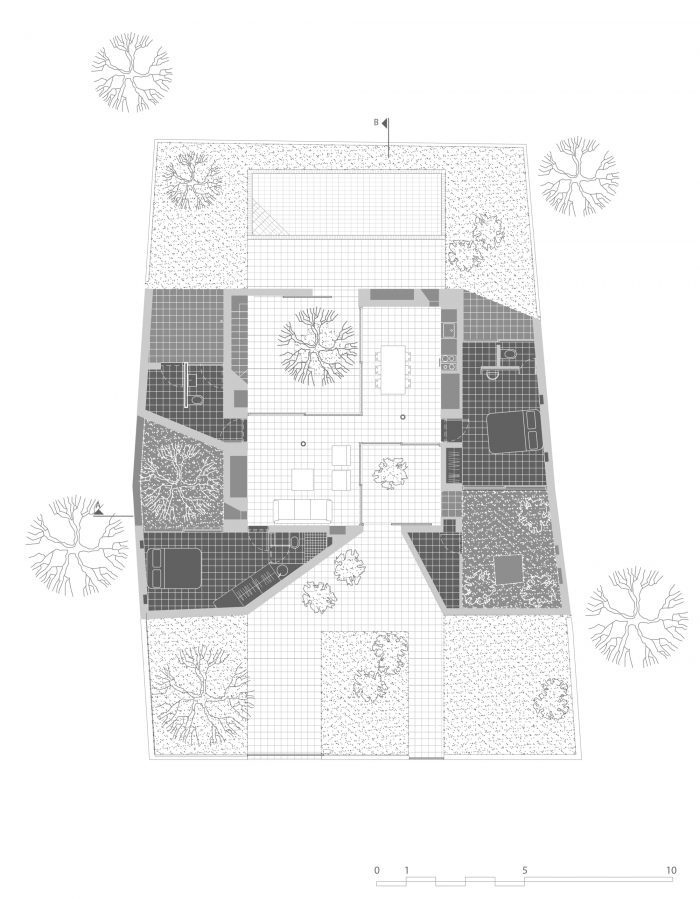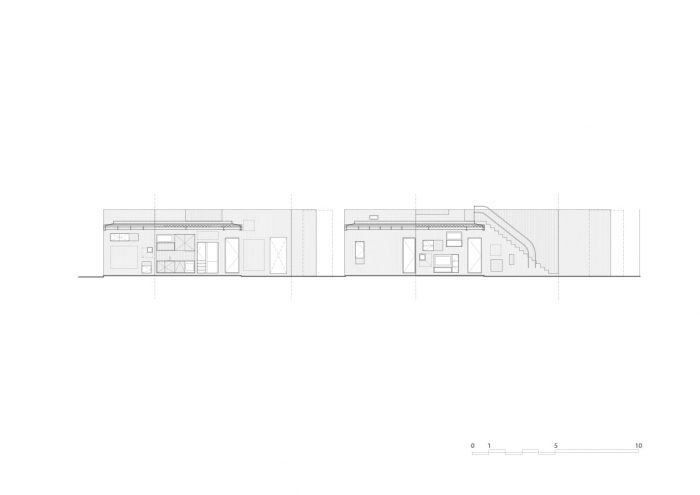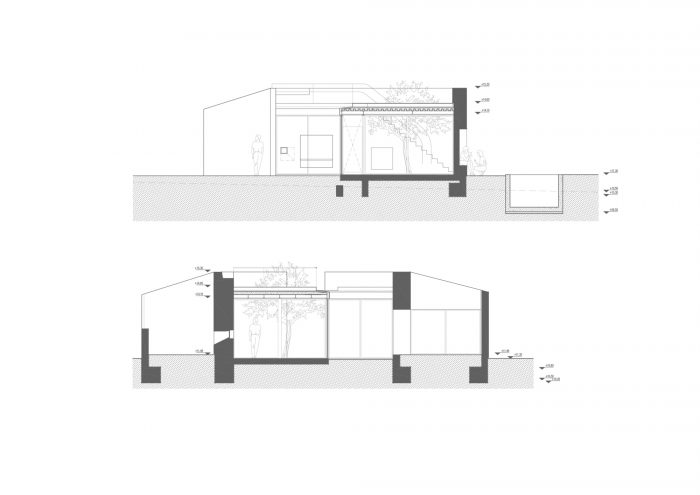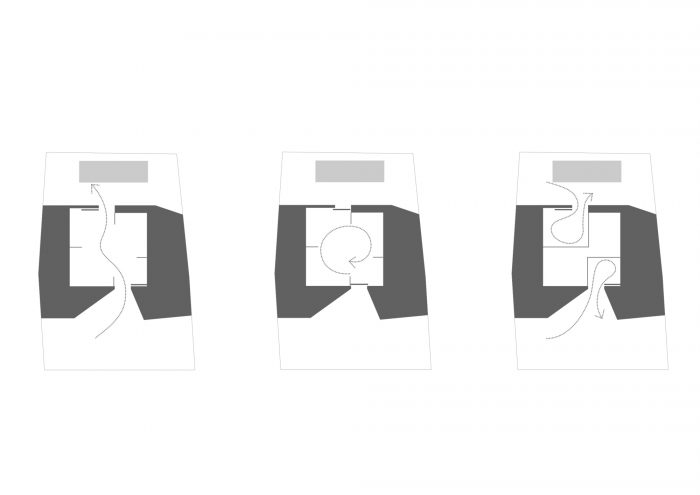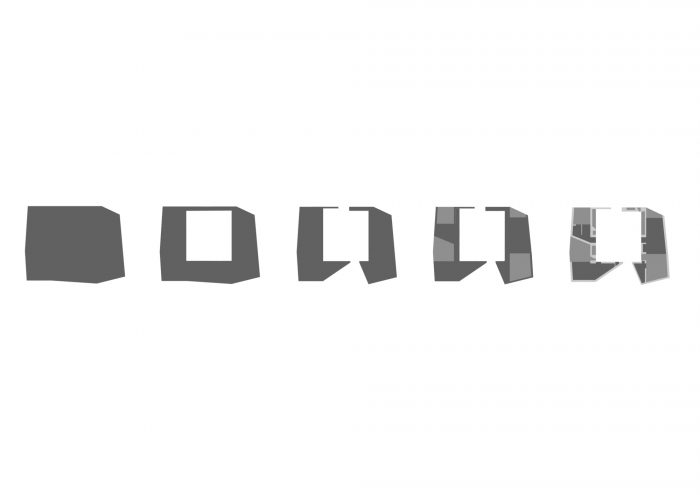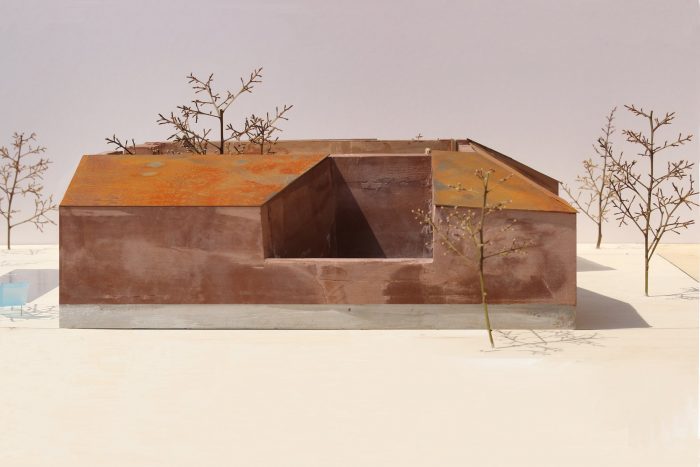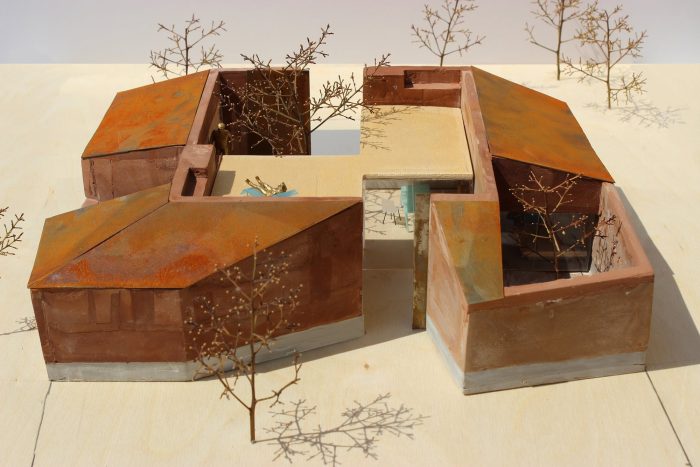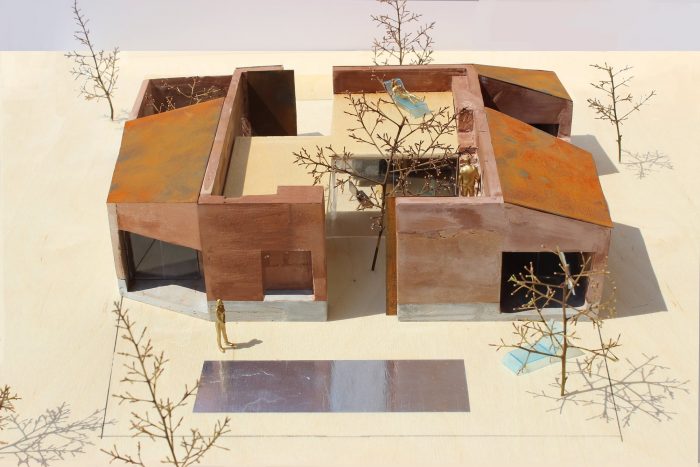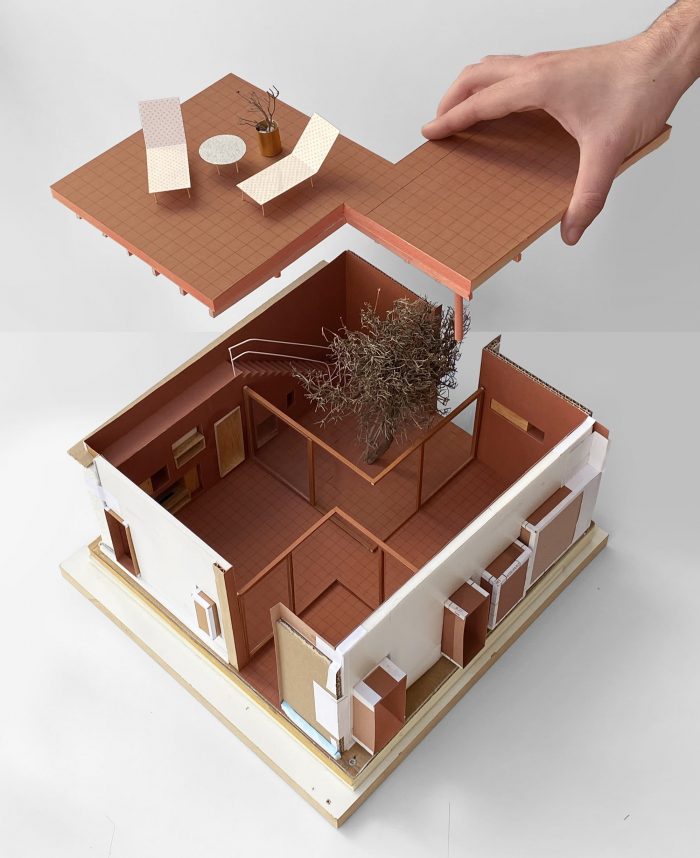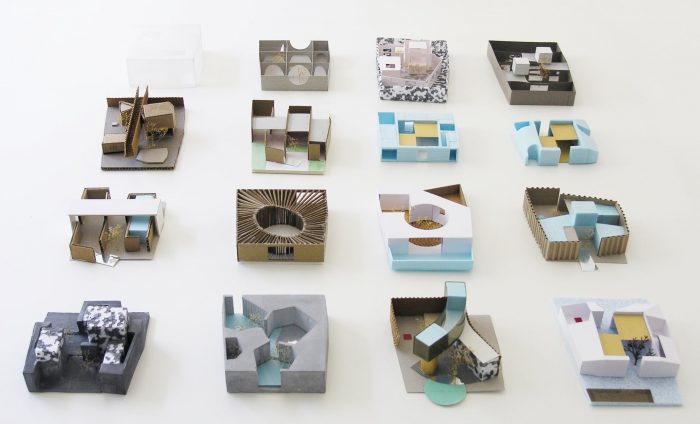关于场地、背景和景观的基本问题是设计这个位于雅典附近萨罗尼克湾的萨拉米斯岛上的适度夏季住宅的驱动力。虽然该岛的历史是由其地理环境主导的–在古代,将该岛与大陆分开的狭窄海峡在萨拉米斯战役中发挥了著名的作用–但最近该地区在希腊造船业中长期发挥的强大作用的消亡,对该岛的未来散发出一种明显的模糊感。
Fundamental questions about site, context, and landscape were the driving forces behind the design of this modest summer home on the island of Salamis, in the Saronic Gulf near Athens. While the history of the island is dominated by its geography — in antiquity, the narrow straights separating the island from the mainland were famously instrumental in the Battle of Salamis — the recent demise of the area’s long and powerful role in the Greek shipbuilding industry emits a palpable sense of ambiguity about the island’s future.
萨拉米斯的地形位于陆地和海洋、城市和自然之间,是其后工业化景观不确定性的一面镜子,它抵制了希腊岛屿度假的典型特征。萨拉米斯缺乏典型海滨目的地的审美特征和假定的外向性,它是一个明显的内向型居民社区的家。
A mirror to the uncertainty of its post-industrial landscape, Salamis’ topographic position between land and sea, city and nature, resists the typical characterizations of a Greek island get-away. Lacking the aesthetic traits and assumed extroversion of the typical seaside destination, Salamis is home to a decidedly inward-looking community of residents.
地块本身很小,很平坦,没有风景,也没有特别显著的特征。它的主要优点是一棵橄榄树和一口井。房子通过 “内省 “的机制来解释场地的地形,组织成一个周边条件,通过气候和室外空间的基本资源来发展自己的自给自足的优点。
The plot itself is small and flat, lacking a view and without particularly remarkable features. Its primary virtues are an olive tree and a well. The house interprets the topography of the site through the mechanism of “introspection”, organized as a perimeter condition that develops its own self-sufficient virtues through the fundamental resources of climate and outdoor space.
与岛上大多数常年居住的住宅相比,这些住宅往往表现出一种临时的、”修复 “的方法,通过长期积累的附加建筑来扩大空间,新的避暑别墅被设想为一种 “减法 “的形式,从一个包含雕塑性空隙的单一材料体积中减去。在这个意义上,外出度假的想法与其说是为了恢复城市生活的所有物质物品,不如说是为了享受家外之家的宁静而脱掉衣服的隐喻。
In contrast to most of the island’s year-round residences, which tend to exhibit a make-shift, “prosthetic” approach to spatial expansion through the chronic accumulation of built add-ons, the new summer house is conceived as a form of “subtraction” from a single material volume containing sculptural voids. In this sense, the idea of going away on holiday is less about reinstating all of the material objects of city life, and more about the metaphor of shedding one’s clothes in order to enjoy the tranquility of a home away from home.
外墙给人的感觉是一个整体的体积,掩盖了中心的一个大型内部庭院的存在。一条狭窄的通道将游客从前院直接引向庭院,而一条次要的双通道则从庭院引向小区另一端的泳池花园。在中央庭院内,围绕橄榄树的较小的玻璃体量提供了主要的生活空间。
Exterior walls give the appearance of a monolithic volume, concealing the existence of a large interior courtyard at the center. A single, narrow passage leads visitors directly from the front yard to the courtyard, while a secondary, twin passage leads from the courtyard to the pool garden at the opposite end of the plot. Within the central courtyard, smaller glass volumes positioned around the olive tree provide the main living spaces.
这些都有全高的玻璃滑动门,在控制庭院一端到另一端的流通的同时,也将室内和室外的空间融合在一起。当所有的滑动玻璃门都打开时,包括房子的前门和后门,都提供了最大的活动灵活性,创造了一个单一的、不间断的户外空间链,延伸到整个场地的长度,就像把房子分成两个。
These are lined with full-height sliding glass doors that merge indoor and outdoor space at the same time that they control circulation from one end of the courtyard to the other. Maximum flexibility of movement is provided when all sliding glass doors are open, including the front and back gates of the house, creating a single, uninterrupted chain of outdoor spaces that extends the entire length of the site, as if splitting the house into two.
方案中所有的 “私人 “区域(卧室、浴室和服务区)都被隐藏在厚重的外墙内,形成了一系列小的、洞穴般的空间。这些空间与次要的庭院配对,为密集的周边空间序列提供光线和通透性。一个客房独立于房子的其他部分,并通过自己的次要庭院进入,其中还包括一口老井。
All “private” areas within the program (bedrooms, bathrooms, and service areas) are concealed within the heavy exterior walls in a series of small, cave-like spaces. These are paired with secondary courtyards that provide light and porosity to the dense sequence of perimeter spaces. A guest wing operates independently from the rest of the house and is accessed through its own secondary courtyard, which also contains an old well.
Architects: AREA, Architecture Research Athens
Area : 105 m²
Year : 2020
Photographs :Yorgis Yerolymbos
Manufacturers : Alumil, Zangra, BRIGHT, Cesi, Flor Gres, Ideal Standard, Komeal, Laria, Marmara Nikolis, QOOP, STELNIC
Design Team : Styliani Daouti, Giorgos Mitroulias, Michaeljohn Raftopoulos
Construction Supervision : Styliani Daouti
Models : Athina Fousteri, Anastasis Papadakis
Structural Engineer : Thanos Giannimaras, Nikos Rossis
Mechanical Engineer : Panos Kamboukos
Landscape Architect : Anna Ambatzi
City : Nisi
Country : Greece



